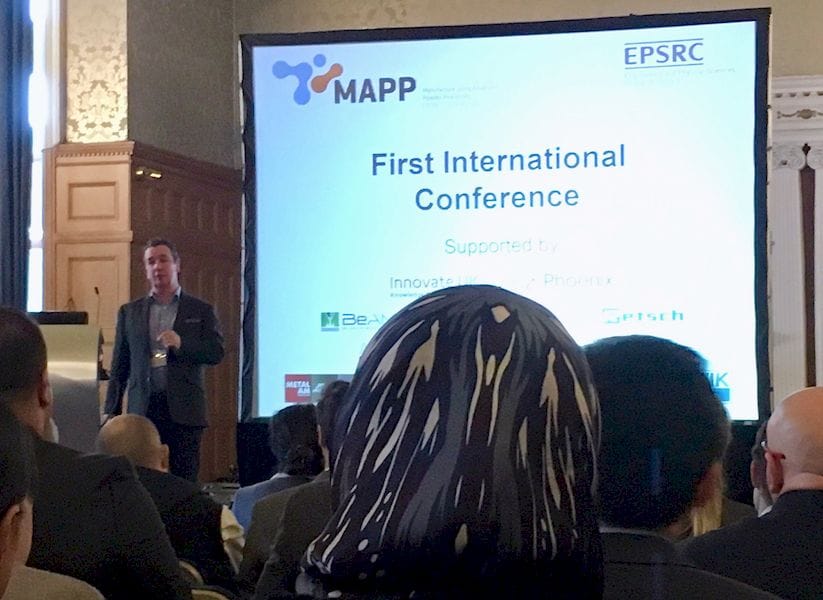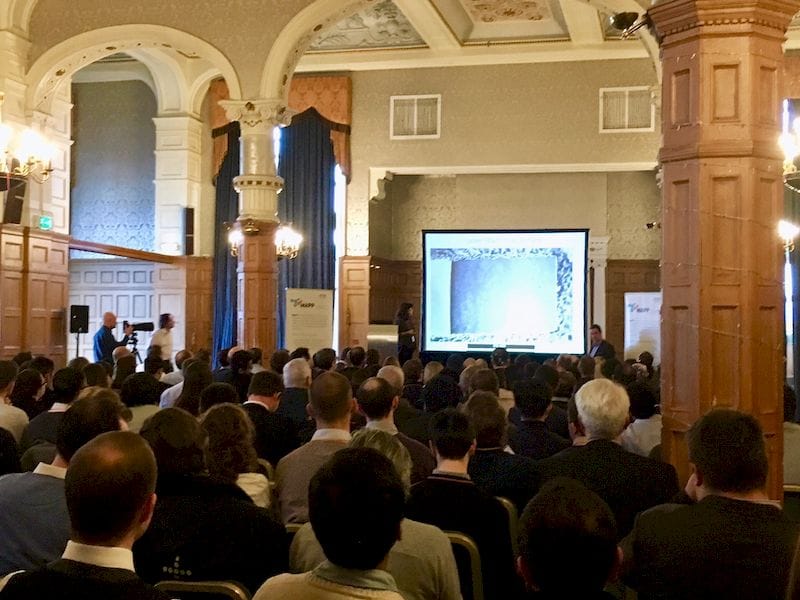
Manufacturing using Advanced Powder Processes is increasing in both quantity and quality, and these are indeed the fundamental drivers for the foundation of the EPSRC Future Manufacturing Hub: MAPP. Launched in January of 2017, one year on MAPP hosted its 1st International Conference over two days in Sheffield.
This is part 1 of a two part series. Part 2 is here.
The venue was the old yet beautiful Royal Victoria hotel — a building steeped in British history that permeated the corridors, halls and rooms at every turn. Originally named the Victoria Station Hotel when it opened in 1862, to describe its proximity to the primary railway station in Sheffield and to recognise the British Monarch on the throne at the time, it was later renamed the Royal Victoria to coincide with a visit from the Prince and Princess of Wales in 1875. More than twenty years later, Queen Victoria herself was a visitor there just as the first industrial revolution was taking place.
As Professor Iain Todd, an Additive Manufacturing (AM) industry veteran and project leader at MAPP pointed out in his welcome address: “Sheffield is one of the homes of the 1st Industrial Revolution, so it is really interesting that around the city we are witnessing a renaissance with the AMRC and advanced manufacturing park.” Moreover, he also highlighted how the university and the city are contributing to the 4th Industrial Revolution / Industry 4.0. “Our future manufacturing hub is part of that – and this conference is one of the activities in this regard.” MAPP’s central premise is to deliver on the promise of powder-based manufacturing to provide low-energy, low-cost and low-waste high value manufacturing routes and products to secure UK manufacturing productivity and growth. Relatively speaking, it is actually a narrow and specific remit, but one that is absolutely fundamental to progress with high end with a broad reach into a number of connected industries.
The goal of the first MAPP conference was to draw together scientists, researchers and commercial powder manufacturers from around the world and at every career stage to disseminate the work — and progress — that is being made in this area.
Across the AM industry emphasis is often placed on process capabilities, however fundamental to many processes are the powdered materials that are fed into the machines. Off-the-shelf, these materials can prove to be variable in terms of performance and quality, and this is where MAPP is looking to make a difference. Talking to Professor Iain Todd, one on one, among a variety of topics, he provided a really quite useful analogy for me, one that provided him with a light bulb moment when it happened! He had been talking with a manufacturer of crisps (or potato chips for any US readers). They’d been discussing materials, and this person had described the base material for crisp production as the potatoes. Obviously, you might think, but then consider; if the input is “potatoes” the output always has to be the same 35g ±0.5g! How many potatoes are the same size and shape? Ok, so it’s not a direct analogy, crisp packets to not contain uniform contents, but it serves to illustrate how MAPP is looking to promote powdered materials that are designed for process, monitored in process to ensure an output with designed quality — and to provide the science to back it up. It’s not all new science either, a great deal of it intersects with the food and pharmaceutical industries, Iain said.

Conference Programme
A carefully curated mix of in-depth keynote presesentations (based on research) together with some faster paced talks and followed by round table Q&A’s were blended well to provide delegates with an engaging format. There was also a session dedicated to some head-spinning “flash presentations” as well as a poster competition detailing the many areas of research being conducted (29 in total) — in a bid to provide insight into the comprehensive scope of the MAPP initiative. The interactive poster session, invited delegates to vote for their top three posters during the course of the event. Indeed,
networking opportunities were abundant, and formally recognised as a key motivating factor for conference attendance. It was also heartening to witness the real diversity across the programme.
Content
The key powder material themes driving Mapp research were consistently in view, focused as they are on novel in-situ observation, characterization and modelling and control, to gain deeper understanding of the interaction between complex processes and materials.
It’s probably important to note, at this point, that what followed involves a great deal of high level science, much of which went straight over my head and left me scratching said head at times! The point, though, is that this scientific activity is intrinsic to AM progress and it is happening.
The first in-depth session focused on “In-situ process and performance characterisation” and was keynoted by Professor Tresa Pollock from the University of California. It was hard not to make a mental note that starting with a strong female presenter was a nice touch, however, if it was unintentional — even better. Prof Pollack’s presentation considered the
3D Analysis of structure and defects at the scale of the melt pool, and provided considerable insight into her team’s research using Femtosecond Lasers and Tomography to achieve workable systems for 3D data set collection and analysis during AM builds. As she noted:
“In-process monitoring is essential.” In this way challenges can be identified and overcome, including how “we have to think harder about designing alloys for AM – to minimise residual stresses,” and “develop more amenable alloys, nano functualisation of high strength alloy powders and design of solidification paths.” This requires requires large 3D and 4D datasets, but Professor Pollock was optimistic that Femtosecond laser tomography is a promising new approach.
Professor Pollock’s keynote was followed by a second keynote presentation delivered by
Prof. Barbara Previtali from the Politecnico di Milano. Another strong female scientist (and role model) working on temporal beam shaping in Selective Laser Melting and molten pool sensing during continuous and pulsed wave laser processing. Describing the research approach and the experimental set up (due to commercial SLM platform set up not allowing tests), which includes machine and materials (AlSI); pulse temporal profiles; and high speed imaging (camera synchronised with illumination) for process diagnosis; Professor Previtali was able to show videos of melt pool monitoring in SLM at different build speeds, which were fascinating. The team’s subsequent image analysis identified molten pool attributes and provided a comparison of pulsed wave (PW) and continuous wave (CW) laser processing using differeing modes and geometry and concluding that a mixed strategy produces improved results, which in turn will be the focus of future development for higher quality and productivity results with SLM.
These very specific, highly detailed presentations were followed by three short, fast-paced presentations and a Q&A session. The highlight of the morning (probably the whole event), from my point of view, was the presentation given by Prof Adam Clare from the University of Nottingham, which considered the issue of ‘finding and fixing defects in metal powder bed processes.’ Apart from the fact that the title of the presentation didn’t require a definition search, and that the science was no more or less impressive than any of the other
fields of research, Professor Clare’s insight and delivery was wholly accessible to a layman like me. Plus, he has a wicked sense of humour — that always helps.
This is part 1 of a two part series. Part 2 is here.

